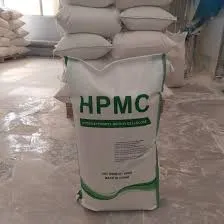
ئاۋغۇست . 30, 2024 15:35 Back to list
how is hydroxyethyl cellulose made
How is Hydroxyethyl Cellulose Made?
Hydroxyethyl cellulose (HEC) is a water-soluble polymer derived from cellulose, a naturally occurring polymer found in the cell walls of plants. This compound has gained widespread use in various industries, including pharmaceuticals, cosmetics, and construction, due to its thickening, emulsifying, and stabilizing properties. Understanding how hydroxyethyl cellulose is made involves a combination of natural resource processing and chemical modification.
How is Hydroxyethyl Cellulose Made?
Once the cellulose is purified, the next stage involves the reaction of cellulose with ethylene oxide, a key chemical used to create hydroxyethyl groups. This is a critical step in the synthesis of hydroxyethyl cellulose. The reaction typically occurs in an alkaline environment where the cellulose undergoes etherification. In this process, ethylene oxide molecules are introduced to the hydroxyl groups present in the cellulose chains, resulting in the formation of hydroxyethyl cellulose. The degree of substitution, indicating how many hydroxyl groups are replaced with hydroxyethyl groups, can be controlled to achieve desired properties in the final product.
how is hydroxyethyl cellulose made

After the reaction, the resulting hydroxyethyl cellulose is often in a liquid form or a thick paste. To isolate the product, it may undergo further purification processes, such as precipitation in alcohol or water, followed by filtration to remove any unreacted materials or by-products. The final product is then dried to yield a powdered form of hydroxyethyl cellulose that can be easily transported and used in various applications.
Quality control plays an important role throughout the manufacturing process. Manufacturers conduct a series of tests to ensure the consistency of the product regarding purity, viscosity, and degree of substitution. These parameters are crucial, as they dictate how the hydroxyethyl cellulose will perform in its intended application. For instance, in pharmaceutical formulations, HEC is often utilized as a thickening agent or a stabilizer for suspensions, while in cosmetics, it serves as a binder or film-forming agent.
HEC's versatility does not end with its production process; it can be modified further to suit specific requirements for different applications. For instance, adjusting the composition and the degree of substitution can tailor its solubility and viscosity, making HEC appropriate for use in a wide range of products, from hair gels to cement additives.
In summary, hydroxyethyl cellulose is produced through the extraction and purification of cellulose, followed by its chemical modification with ethylene oxide. This process results in a versatile polymer that is integral to many industries due to its unique properties and functionality. The continual development and optimization of HEC production underscore the importance of this compound in modern applications.
-
Why HPMC is a Key Additive in Wall Putty Formulations
NewsAug.05,2025
-
Redispersible Powder in Decorative Renders: Function Meets Finish
NewsAug.05,2025
-
Redispersible Powder for Interior Wall Putty: Smooth Results Every Time
NewsAug.05,2025
-
HPMC’s Water Retention Capacity in Dry Mortar Applications
NewsAug.05,2025
-
HPMC Factory Contributions to Liquid Detergents
NewsAug.05,2025
-
How HPMC Factory Products Change Detergent Textures
NewsAug.05,2025







